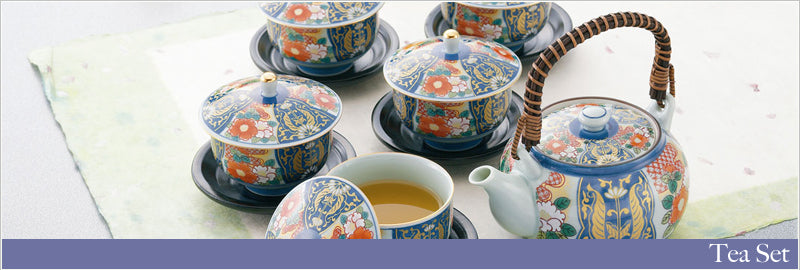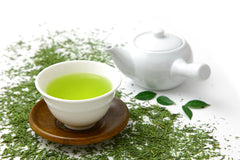How to Brew the Tea

How to Brew the Tea

Making Japanese green tea is an art, but there are two completely different ways that you can do it. The traditional way is the first and in many ways most popular method – although it is very time consuming, and can be quite difficult. There are many different websites that can instruct you on how to do this. The second way is much more practical. This means that when a Japanese company or family are serving tea for a special occasion they will use the traditional way, when it comes to day to day life, they will use the quicker and more practical method as they want to enjoy drinking the tea! If you want to make green tea to enjoy yourself, here are our instructions on how to do it:
How to Brew the Loose Leaf Teas
When brewing loose leaf green tea, you will need to be aware of two things. When green leaf tea is processed, it is steamed and not treated with heat. This means that the Japanese loose leaf tea can actually be brewed in a lower heat setting to release the full flavor of the tea. Therefore you do not need to boil the water to brew green tea. Secondly, brewing loose leaf green tea is not complicated! Absolutely anyone can do it with a little care and attention, and soon you will find it just as easy as brewing a cup of coffee.
Heating the Water
You should only heat up the water that you are actually going to drink. There are some that argue that you should definitely bring the water to the boil to ensure that you get the best taste possible, and although we won’t argue with them, we cannot honestly tell the difference when it comes to a pot of green tea that has not been made with boiling water. When you are boiling the water, you can either use a kettle or a microwave oven – either is good. In these modern times, many Japanese offices and homes will have an electric water dispenser, and these will have their exact temperature set.
Using the Yuzamashi (Water Cooler)
The Yuzamashi (Water Cooler) is a tea pot accessory to cool the water temperature. If you would like to enjoy a real Japanese green tea, the Yuzamashi is one of the must-have items!
Pour the boiling water into the Yuzamashi (Water Cooler), the hot water temperature can be lowered the ideal temperature for brewing Japanese tea, 176℉ (80℃).
How Much Green Tea

You will only need one teaspoonful or two grams of green tea per cup, but you may find that some people prefer a little more or a little less. As you brew more and more green tea, you will learn what your tastes are, and you will not have to measure out the green loose leaf tea exactly.
The Teapot
A tea ball is a great way to brew green tea, and tea made with it will always taste good. However, in many cases it is simply too small for the tea leaves to infuse properly. This means that you will not achieve the full flavor from the loose leaf. Instead, we would suggest that you use a teapot that has a removal metal basket, and you can place the loose leaf tea here. A teapot called Kyusu has a metal strainer that lies over the inside of the spout, which means that you can put the loose leaf green tea directly into the teapot.
Infusion Water Temperature
Loose leaf green tea comes in many different forms, and you should be aware of this when you are deciding on the infusion water temperature for your tea. We have created a quick guide for this below. When your water reaches boiling point then you should let it cool down for a few moments, or if you are in a hurry you can add a small amount of cold water. If you wish, a thermometer can be used to tell exactly how hot the water is – but the more experienced you become, the less this will be required.
Infusion Time
Every green tea variety requires a slightly different infusion time, and your personal taste will also come into play here. As your green tea infuses, it is important not to shake or swirl the tea, as this will actually make the tea taste worse! After your tea has infused, slowly and carefully pour the green tea into your cup.
Green tea from Japan will not taste bitter, but if you are hoping for a more astringent taste, you should put more loose leaf tea into your infusion, and leave it to brew for longer. On the other hand, if your tea is too bitter, then you should lessen the amount of loose leaf you put in to brew, and leave it for a shorter time. Loose leaf green tea can be infused more than once – three times is generally considered to be the maximum amount of time.
Choosing Tea Pot
The ceremonial cha no yu, or tea ceremony, is just one way to make green tea. When you make leaf tea there are many different tools and instruments that you can use, such as a tea pot, a mug strainer, and an automated tea server.
Here my talk focuses on traditional tea pot. What makes a good tea pots? A good tea pot can make all of the difference to the way that your tea tastes. You should take into consideration the way that the teapot looks and feels. Tea pots are often very carefully designed and hand crafted to ensure that each of your brews taste delicious. A good teapot will give you a sense of confidence, because you will know that every pot of tea will be perfect.
Types of Handle
In Japan, it is much more common for the handle on the tea pot to be on the side, as this is much easier to use when making sencha, or Japanese green tea. However, there is also a top handle teapot that can be useful for those that want better manual control of the tea pot.
Teapot materials
Porcelain teapots are very popular for traditional green tea because the smooth surface does not interfere with the taste or smell of the tea. On the other hand, ceramic teapots are often popular because they will absorb a little of the water, which is said to remove some of the bitterness from the tea. Ceramic teapots are very good at retaining their temperature, which means that they are excellent for brewing. Glass teapots are not good at this as they cool down rapidly.
Teapot size
You can measure the capacity of your teapot by filling it up to the very rim. The size of your perfect teapot will greatly depend on how much green tea you wish you drink, and how many other people want to drink with you. When brewing, round teapots should be filled up around three quarters full. High quality sencha, or green tea, as well as gyokuro are often brewed in small teapots, whilst houjicha and bancha are typically brewed in large teapots.
